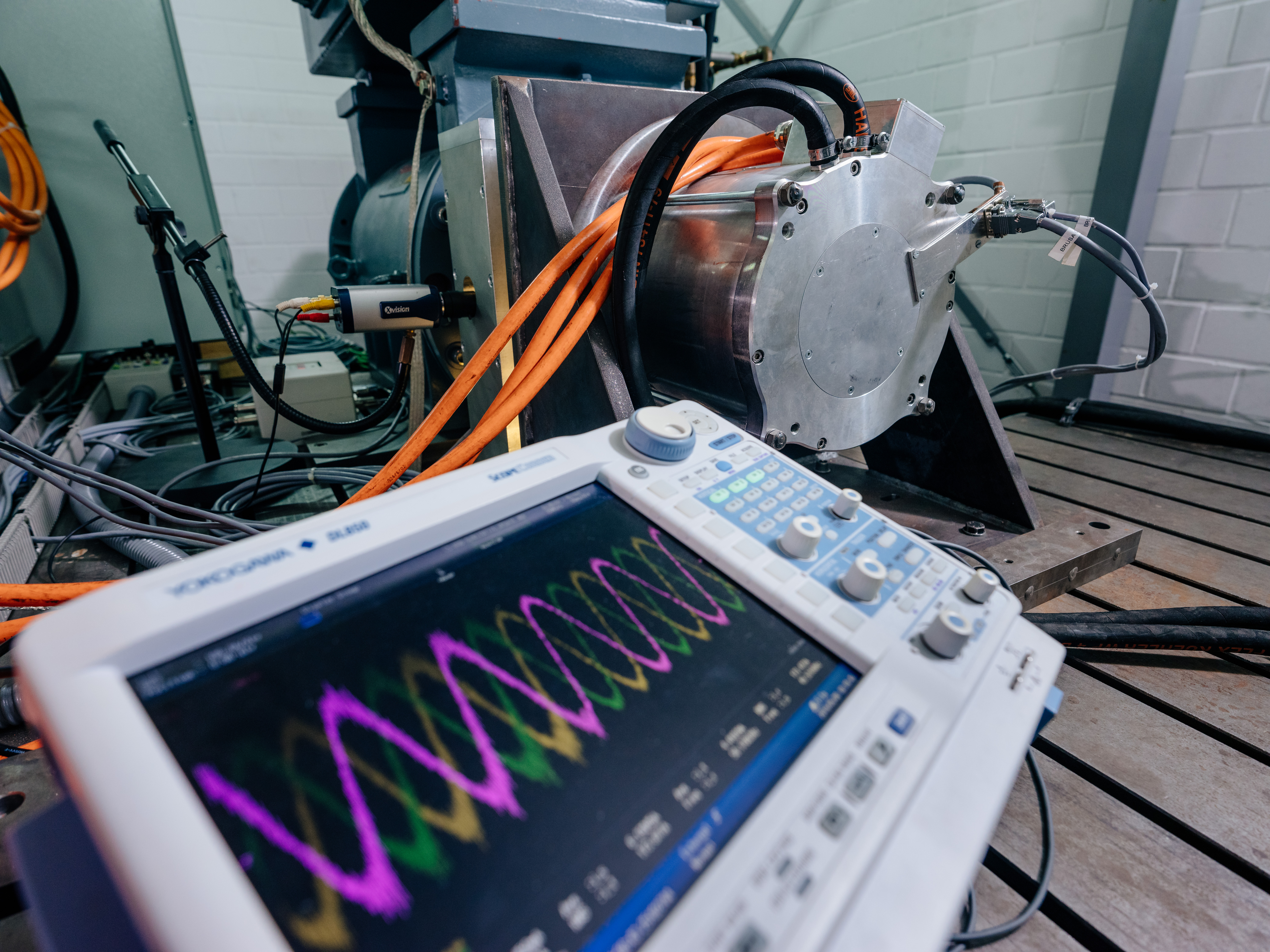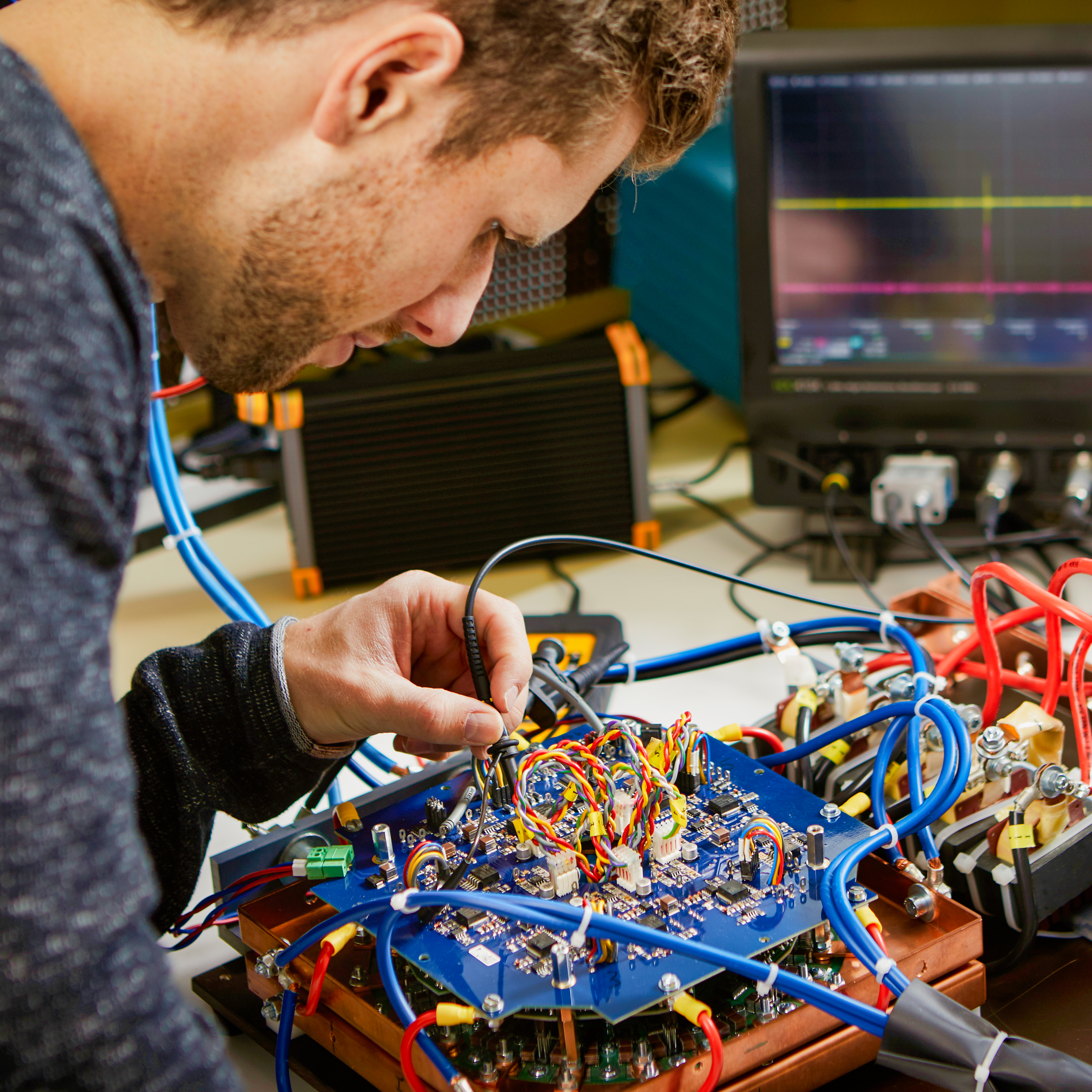Research
The field of power electronics and electrical drives, which is assigned to be part of the classic power engineering, is more up-to-date than ever before and there is also a strong demand for it.
Energy conversion using electric drives has penetrated all areas of life. It often goes unnoticed or is taken for granted by the user and variable speed drives are now state of the art even for household appliances. More sophisticated electrical drives are found in elevators, paper machines, rolling mills or rail vehicles. Electric drives are also gaining more and more attention in mobile systems such as ships, aircrafts and road vehicles. In order to safe costs and resources, many drive systems are designed for heavily utilized operation leading to an increased power and torque density. This is accompanied by a more complex system behavior, e.g. due to magnetic saturation effects or an intensified power loss behavior. Hence, modern control and monitoring procedures are becoming increasingly important in order to ensure reliable and optimal system operation.
Power electronics is not only an indispensable component of controllable electrical drives, but has also become a key technological component in the efficient generation, distribution and use of electrical energy: The grid connection of renewable energy sources such as wind power or photovoltaics is hardly conceivable without power electronics. The frequency-variable conversion of electrical energy, as in the case of the supply of the railway network, is no longer accomplished with rotating machine sets, but with power electronics. New impulses are coming from the energy supply of information technology facilities such as server farms, where electronic power supplies with the highest efficiency in the smallest volumes are required. With the advent of new power electronic semiconductor devices based on wide-band gab (WGB) materials such as gallium nitride (GaN) or silicon carbide (SiC) completely new design possibilities arise opening exciting research questions.
Power electronic converters are increasingly operated in networks of local, intelligent energy systems, for example as smart and micro-grids. Compared to stand-alone operation, this results in a much more complex control system framework, since the interaction of different power electronic components as part of energy storage systems, sources and loads must be considered. In addition to the primary control of current, voltage and frequency within local energy nodes, an optimized power scheduling on secondary and tertiary level is necessary to ensure safe operations (especially in islanded grids) and to pursue secondary objectives such as the minimization of power peaks or the maximization of renewable energy generation. In this context, it is often necessary to cushion the fluctuating feed-in of regenerative generators (PV, wind power plants, ...) by intelligent storage systems (battery, flywheels, ...). Consequently, sector coupling (heat, gas, mobility, ...) is becoming increasingly important.



